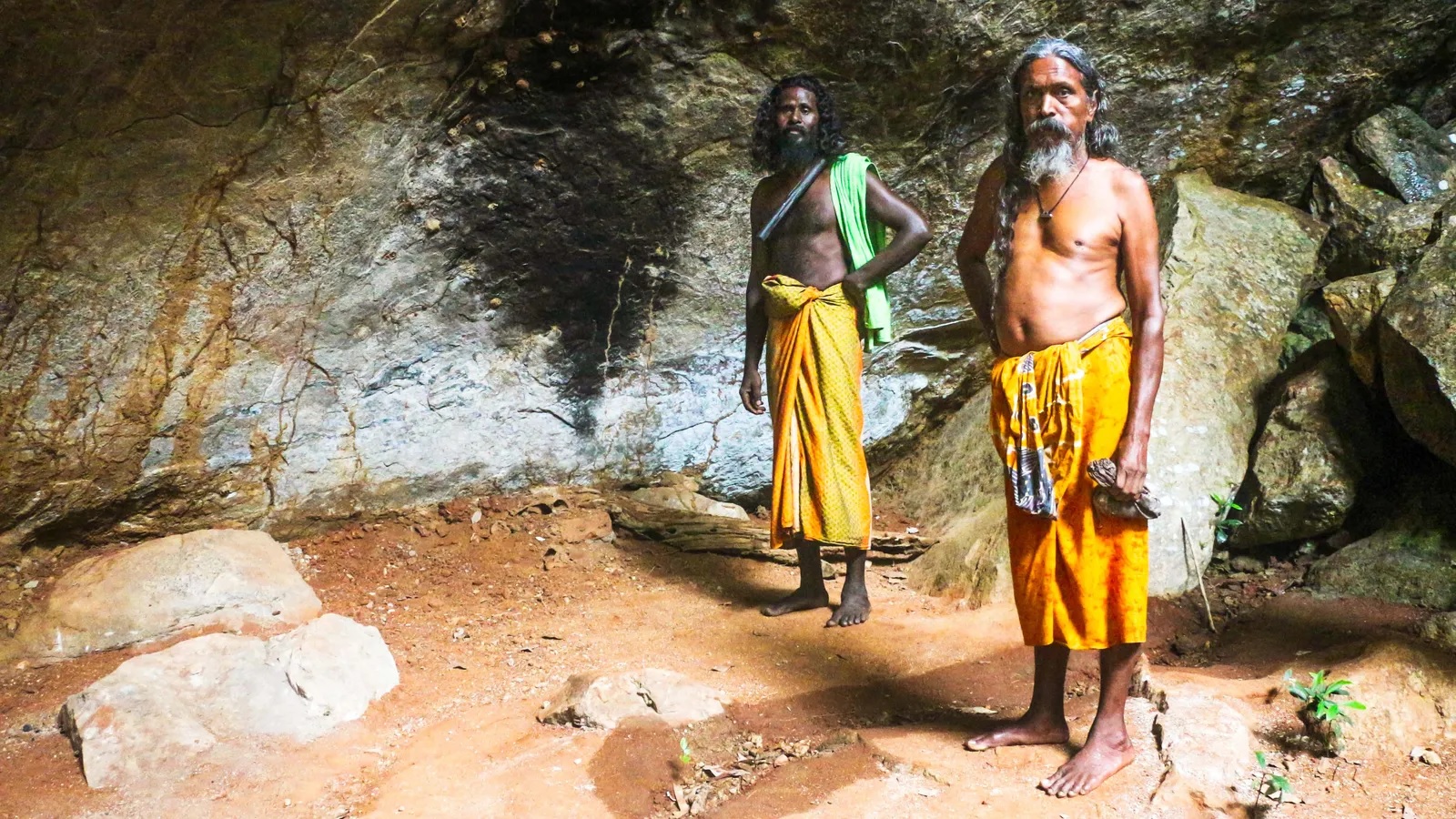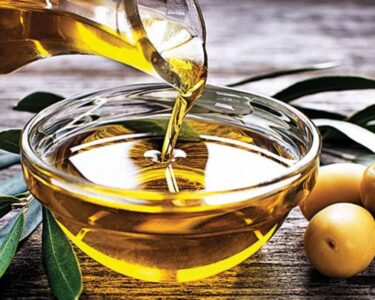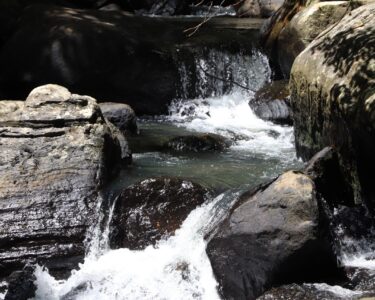The Adivasi or Vaddha people located in Dambanda and other inland isolated pockets extending from the Eastern and North-eastern slopes of the hill country and the Eastern and North-central parts of the country have a rich food tradition. A recent study carried out by academics of Sri Jayawardanapura University reveals a number of their less-known recipes.
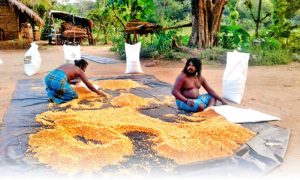
Traditionally, the Veddā group prepares meat and fish by direct roasting them over a wood fire, covering them with hot ashes or smoking them, and drying them on a wooden rack. Excess hunt is sun-dried or smoked to preserve for rainy seasons.the wood to smoke is carefully selected as all kinds of wood are not used. Karanda and Burutha or satinwood or the most commonly used wood for smoking.
Harvesting honey from various forest insects is a regular task and a group activity. Honey is for direct consumption and for meat preservation, something similar to honey-roasted meats you could find in a supper market.
Sausages: A sausage-like product, “Perume,” is an energy- and nutrient-dense preserved form of meat. Alternative layers of meat and fat consist of this product with variations depending on the animal type (deer, venison) and parts (monitor lizard tail stuffed with fat from the sides of the animal, or clotted blood).
Boneless game meat, roasted rice (Oryza sativa) flour, green chili (Capsicum annuum), cumin (Cuminum cyminum), coriander (Coriandrum sativum), and leaves of Asamodagam (Trachyspermum roxburghianum) are formed into balls, batter coated with rice flour and deep fried in Bassia longifolia seed oil to make “Mas guli” or “Kurakkal.” Similar to meatballs available on the shelves of the supper market.
Carbohydrate Source:
Tubers and yams of forest origin mainly Dioscorea species (Yams) roasted over direct fire is a carbohydrate source of the Veddā’s diet.
Cultivated cereals such as rice, finger millet (Eleusine coracana), and maize (Zea mays) made into flour is for unleavened flatbread (Roti) or thick boiled flour paste (Thalapa) that accompany cooked smoked meat with gravy (Ānama) is the most popular preparation of the Dambana adivasi clan.
Cereal flours are supplemented with cycad (Cycas circinalis) seed flour (sliced, dried, and ground) or Bassia longifolia flowers (dried and ground) for Roti and Thalapa.
Various herbs, leafy vegetables, and unripe fruits of gourds and melons having medicinal and therapeutic properties are part of the regular diet.
Wild mushrooms are another delicacy of the Veddha people.
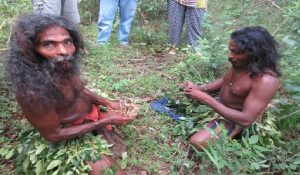
Feeding Mothers:
Another important food preparation is based on flour obtained from various wild food sources. ‘Madu’ (Cycas circinalis) seeds are consumed by being cut into slices, dried, ground and baked into hard cakes. Feeding mothers are given the rice with special gravy prepared with garlic (Allium sativum), pepper (Piper nigrum), ginger (Zingiber officinale) and curry leaves. In addition, feeding mothers do not eat either the fat of monitor lizard or monkey flesh, because they believe that these would produce purging and would kill the infant. However, the mother is allowed to eat the meat of grey monkeys.
Transgenerational knowledge transfer on traditional systems for sourcing and sustainable harvesting practices of food, converting into safer ingredients (e.g., ways to reduce toxins and undesirable compounds while improving palatability, digestion, and safety), and effective preservation technologies has enabled harmonic balance between human-forest environment while sustaining nutrition and health status of the Veddā group. Points out the study. The food menus and preparation of the Veddha people is something that needs to be carefully studied by modern-day nutritionists.



